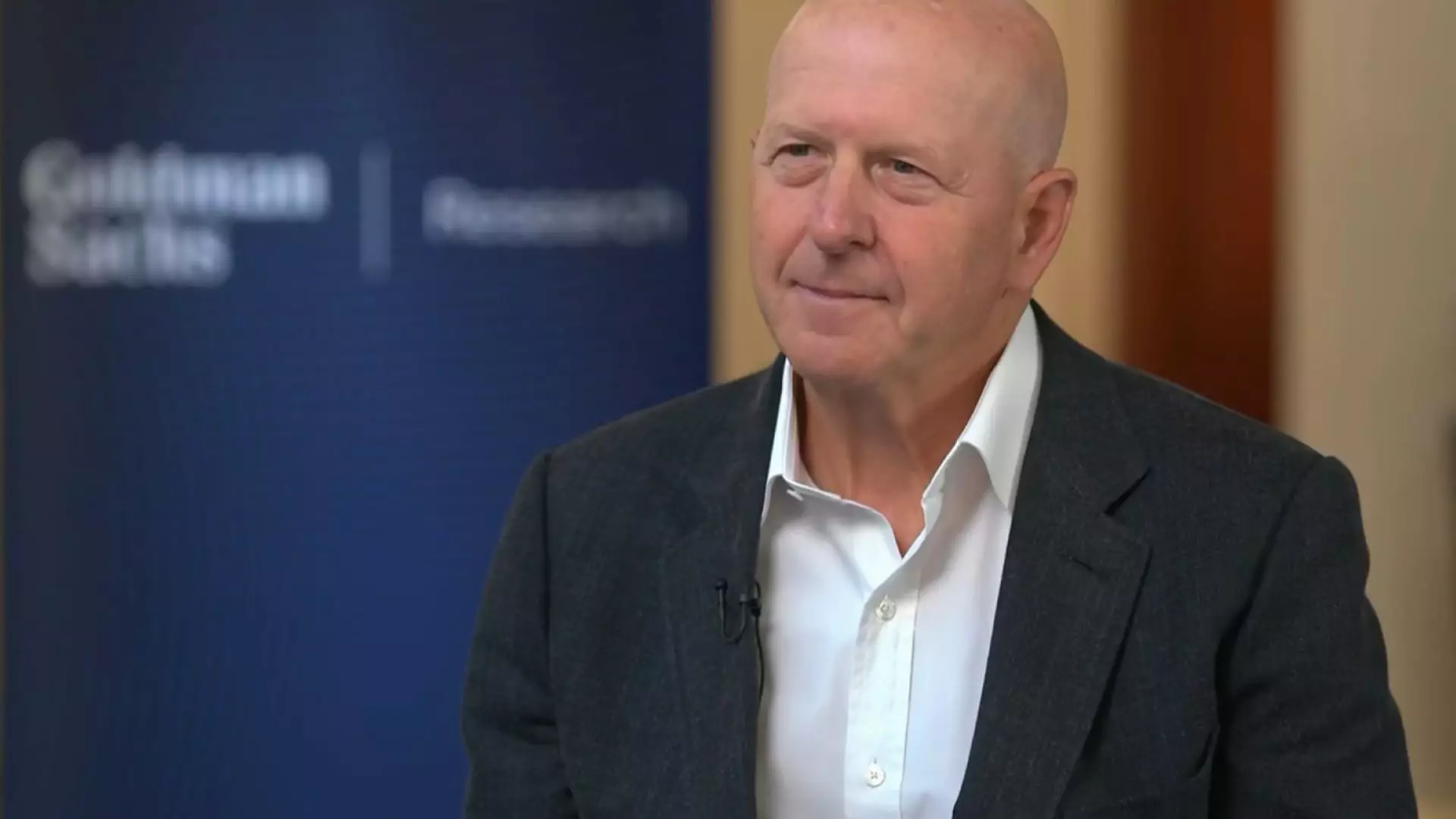The recent financial report from Goldman Sachs has sparked a wave of discussions regarding the resilience of American banking amidst turbulent economic winds. On Monday, Goldman disclosed earnings that exceeded analysts’ expectations, showcasing a notable earnings per share of $14.12 on revenue of $15.06 billion. These figures indicate a robust 15% profit increase compared to the same quarter last year. The performance signals that certain segments of the banking giant are thriving, specifically equities trading, which saw a staggering 27% rise in revenue to $4.19 billion. However, while the headlines exude optimism, we must navigate through the waters of caution.
Goldman’s ability to generate strong trading revenue amid an unpredictable economic environment highlights the company’s adaptive strategy. However, this growth must be viewed within the broader context of rising global tensions and a shifting economic landscape fueled by fluctuating policies and unpredictable market variables. The economic uncertainties stemming from recent escalations in trade tensions under the previous Trump administration pose a serious threat to long-term investor confidence.
Divisions Struggle: A Cautionary Tale
Despite the glowing performance in equities trading, several of Goldman’s other divisions indicated cracks in the firm’s financial façade. The fixed income division experienced a minimal rise of just 2%, falling short of expectations. Investment banking fees saw an 8% decline, bringing into question the sustainability of the revenue model in a climate where advisory revenue is contracting. This signals a broader issue: while trading activities have boomed, the foundational aspects of investment banking are in decline, potentially foreshadowing turbulent times ahead.
Moreover, Goldman’s asset and wealth management division reported a fall of 3% in revenue, further highlighting the fragmentation within the firm’s profit-generating segments. The decreasing returns from private equity investments and other asset classes reflect broader market challenges and a possible retreat of investment confidence among high-net-worth individuals. Such discrepancies can lead investors to raise eyebrows at the real strength of Goldman’s market position.
CEO’s Outlook: Confidence Amidst Challenges
CEO David Solomon’s comments indicate a sense of calm amidst chaos, suggesting that despite the looming uncertainties from trade negotiations and political intricacies, Goldman remains steadfast in maintaining its commitments to clients. However, one cannot ignore the asymmetry of this optimism. While Solomon’s assurances may reassure stakeholders, they also stand in stark contrast to the underwhelming performance of key divisions. The stark discrepancy raises critical questions about whether the confidence emanating from leadership is rooted in bold foresight or a reluctant acceptance of the current operational landscape.
Despite the commendatory surge in equities trading revenue, the fact remains that Goldman’s stock has endured a decline of 14% year-to-date. This drop raises a red flag about the inherent risks lurking beneath the surface of inflated trading revenue. As other competitors such as JPMorgan Chase and Morgan Stanley similarly exceeded expectations on trading activities, it further complicates Goldman’s narrative. The rise in equities trading revenue at these rivals indicates a competitive landscape where volatility can rapidly shift the tide.
Investor Sentiment: A Delicate Balancing Act
As we peel back the layers of Goldman’s latest report, it’s evident that while performance metrics highlight short-term gains, investor sentiment is heavily influenced by the undercurrents of economic challenges. The dependence on equities trading as a leading revenue generator raises the question of whether this is a signal of a profitable recovery or merely a transient reaction to current volatility. One must ponder whether the resilience shown by Goldman is replicable or instead a fleeting response to external pressures.
Investors should remain vocal about the long-term implications of fluctuating revenues across divisions. The precarious balance of relying on one robust segment while watching others falter is not a sustainable model for growth. While the immediate performance is commendable, it’s crucial to critically assess whether Goldman Sachs is poised for a durable recovery or if it’s teetering on the edge of vulnerability in a volatile economic climate.

